When buying manzanita driftwood for aquariums, often what is found are groupings of single or double branches. It is hard to find pieces with multiple branches that reach up high enough to be seen above fully grown plants, and when those pieces are found, they are usually prohibitively expensive.
However, there are many ways in which the individual branches can be put together to create the look of a multi-branch centerpiece. This is one way to do it which I find rather simple to do while also being very stable and long lasting.
Materials Needed:
Instructions:
That's it! The centerpiece can now be placed in the tank! Be sure to protect the bottom of your tank from the slate and screws (I recommend using an egg crate under the substrate and driftwood centerpiece). The slate will keep the driftwood in place for years, and the substrate will hide the slate, screws, and glue.
I hope this method helps someone make their own driftwood centerpiece!
 <-- Front View of Centerpieces
<-- Front View of Centerpieces
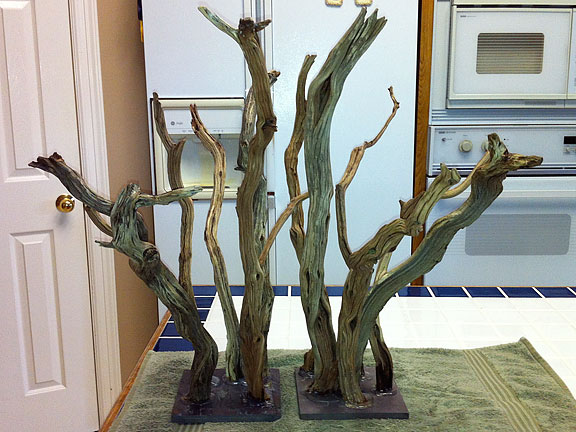 <-- Side View of Centerpieces
<-- Side View of Centerpieces
However, there are many ways in which the individual branches can be put together to create the look of a multi-branch centerpiece. This is one way to do it which I find rather simple to do while also being very stable and long lasting.
Materials Needed:
- Manzanita Driftwood - 5 to 6 branches of varying sizes
- Saw - to cut the wood
- Slate Tile - I used a 6"x6" piece that was 3/8" thick
- 1" Stainless Steel Screws - must be SS or they'll rust
- Drill and Drill bits - for wood and slate
- Hot Glue Gun and Glue - your regular craft store stuff works fine
Instructions:
- Cut wood. Cut the bottom of each piece of wood so that it has a flat surface with enough space for a hole to be drilled into the center of the wood from the bottom. If the wood is rotten or split, either cut it off or build it up with wood filler so it can securely hold a screw.
- Prepare wood. Prepare the wood for the aquarium. Wash it, boil it, whatever you want to do.
- Drill holes in wood. Drill a hole in the bottom of each piece of wood. The hole will travel up through the center of the wood. It only needs to be about an inch deep and the diameter that fits the screws you are using.
- Drill holes in slate. Drill multiple holes in the slate tile. Make the holes slightly larger than the diameter of the shank of the screws so they can be pushed in and out without the threads getting caught. You can experiment with holding the wood in different positions to get some idea of where you want to put the holes, but to be honest, I found that it really doesn't matter at this stage. Just put holes all around the slate tile, and if you really need to change it, you can always add another one later.
- Screw wood to slate. Here comes the fun part. Start by screwing in the tallest piece of wood for your back piece. Keep it loosely attached to the slate bottom so it can be turned and twisted, but screw it in enough so that the wood is well supported. Repeat this with all the wood pieces. As you work with the wood, you'll probably move the pieces around until you get the look you want. When you finish, keep the screws loose so you can tilt and wiggle the wood.
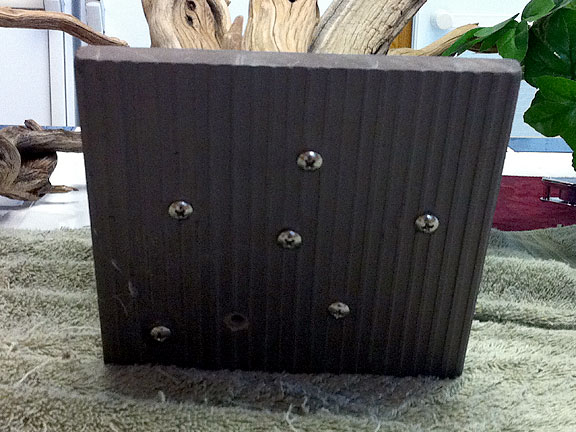
- Use glue to shim wood. Use hot glue around the base of each piece of wood. This is when you will make the final decision of the wood's position. If you need for the wood to tilt a little, loosen the screw to give a little more wiggle room, then add more hot glue under the "gap" between the bottom of the wood and the slate tile. Hold this in position until the glue cools (you can lean the centerpiece over and let gravity hold it in place for you). Be patient at this point because the glue is needed to act as a shim. If you move the wood before the glue has set, you'll squish the glue and your "shim" will be flattened.
Continue to glue each piece of wood. Each time, put a heavy bead of glue all around the base of the wood, then twist the wood so the glue can get underneath it, and then let the glue cool in that position.
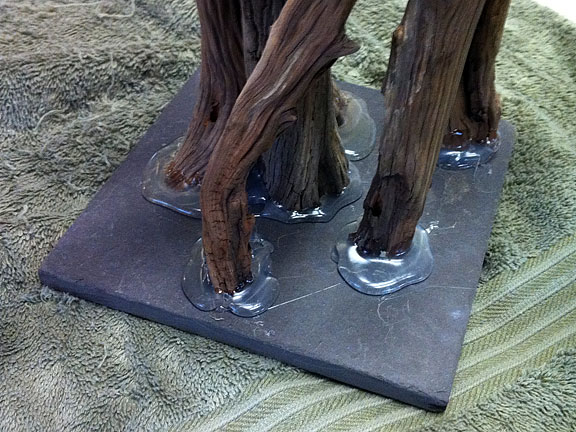
- Tighten screws. Once all the glue has cooled, it is time to tighten the screws. You should be able to tighten them very securely so the wood is firmly attached to the slate. The glue itself does not actually attach the wood to the slate (hot glue easily comes off of slate), but it acts as a molded shim for each piece of wood so that there are no gaps between the wood and slate. When you tighten the screws, it applies pressure to the glue, and this holds the wood very firmly in place.
That's it! The centerpiece can now be placed in the tank! Be sure to protect the bottom of your tank from the slate and screws (I recommend using an egg crate under the substrate and driftwood centerpiece). The slate will keep the driftwood in place for years, and the substrate will hide the slate, screws, and glue.
I hope this method helps someone make their own driftwood centerpiece!
 <-- Front View of Centerpieces
<-- Front View of Centerpieces <-- Side View of Centerpieces
<-- Side View of Centerpieces

 )
)
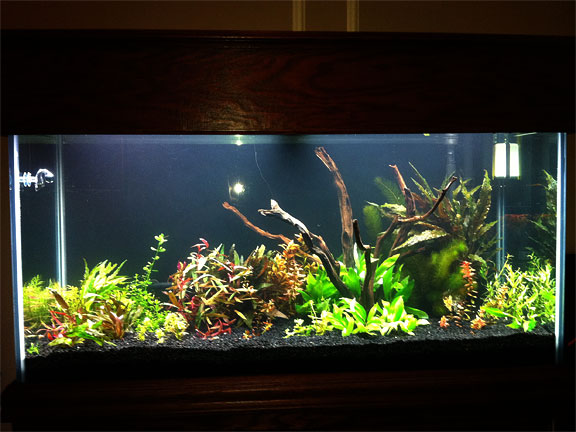
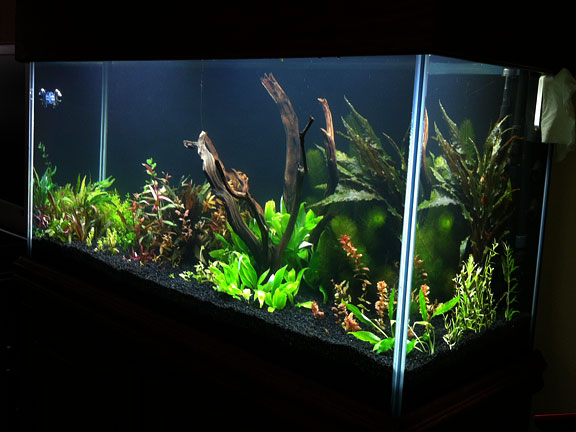
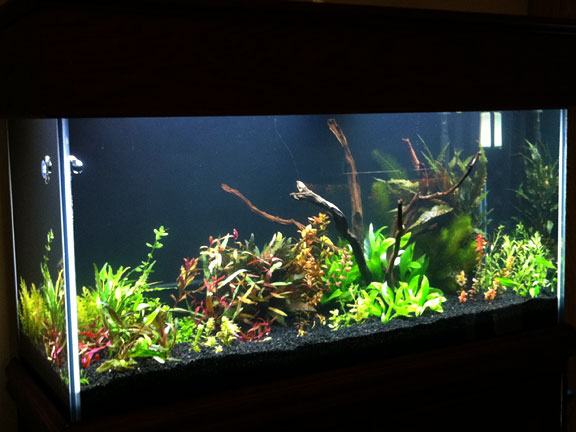
Comment